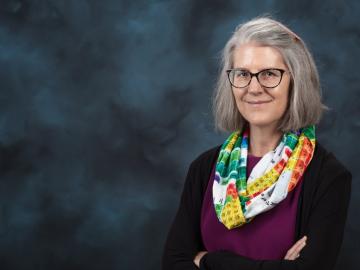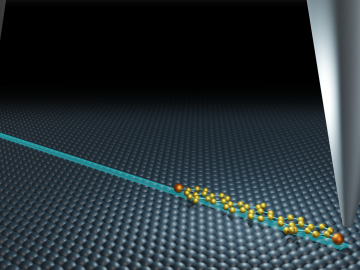
Filter News
Area of Research
- (-) Building Technologies (1)
- (-) Computer Science (15)
- (-) Materials for Computing (12)
- (-) Mathematics (1)
- (-) National Security (40)
- Advanced Manufacturing (3)
- Biology and Environment (41)
- Computational Biology (1)
- Computational Engineering (3)
- Electricity and Smart Grid (3)
- Energy Science (80)
- Functional Materials for Energy (1)
- Fusion and Fission (6)
- Fusion Energy (2)
- Isotope Development and Production (1)
- Isotopes (27)
- Materials (57)
- Neutron Science (18)
- Nuclear Science and Technology (11)
- Quantum information Science (8)
- Sensors and Controls (1)
- Supercomputing (109)
News Topics
- (-) Computer Science (40)
- (-) Cybersecurity (20)
- (-) Grid (7)
- (-) Isotopes (1)
- (-) Machine Learning (16)
- (-) Microscopy (4)
- (-) Space Exploration (1)
- 3-D Printing/Advanced Manufacturing (7)
- Advanced Reactors (1)
- Artificial Intelligence (17)
- Big Data (10)
- Bioenergy (3)
- Biology (5)
- Biomedical (4)
- Biotechnology (1)
- Buildings (4)
- Chemical Sciences (6)
- Clean Water (1)
- Composites (1)
- Coronavirus (5)
- Energy Storage (7)
- Environment (8)
- Exascale Computing (2)
- Frontier (1)
- Fusion (1)
- High-Performance Computing (6)
- Materials (12)
- Materials Science (19)
- Mathematics (1)
- Nanotechnology (8)
- National Security (36)
- Neutron Science (9)
- Nuclear Energy (5)
- Partnerships (5)
- Physics (1)
- Polymers (6)
- Quantum Computing (1)
- Quantum Science (7)
- Security (12)
- Simulation (1)
- Summit (4)
- Transportation (7)
Media Contacts

Oak Ridge National Laboratory researchers designed and field-tested an algorithm that could help homeowners maintain comfortable temperatures year-round while minimizing utility costs.

Deborah Frincke, one of the nation’s preeminent computer scientists and cybersecurity experts, serves as associate laboratory director of ORNL’s National Security Science Directorate. Credit: Carlos Jones/ORNL, U.S. Dept. of Energy

When COVID-19 was declared a pandemic in March 2020, Oak Ridge National Laboratory’s Parans Paranthaman suddenly found himself working from home like millions of others.

Using complementary computing calculations and neutron scattering techniques, researchers from the Department of Energy’s Oak Ridge and Lawrence Berkeley national laboratories and the University of California, Berkeley, discovered the existence of an elusive type of spin dynamics in a quantum mechanical system.

Researchers at Oak Ridge National Laboratory have identified a statistical relationship between the growth of cities and the spread of paved surfaces like roads and sidewalks. These impervious surfaces impede the flow of water into the ground, affecting the water cycle and, by extension, the climate.

Researchers at the Department of Energy’s Oak Ridge National Laboratory and the University of Tennessee are automating the search for new materials to advance solar energy technologies.

Oak Ridge National Laboratory’s Center for Nanophase Materials Sciences contributed to a groundbreaking experiment published in Science that tracks the real-time transport of individual molecules.

Six ORNL scientists have been elected as fellows to the American Association for the Advancement of Science, or AAAS.

Four research teams from the Department of Energy’s Oak Ridge National Laboratory and their technologies have received 2020 R&D 100 Awards.

Two staff members at the Department of Energy’s Oak Ridge National Laboratory have received prestigious HENAAC and Luminary Awards from Great Minds in STEM, a nonprofit organization that focuses on promoting STEM careers in underserved


